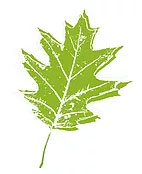Etymology
Linnaea is Latin, honoring Carolus Linnaeus, the father of bi-nominal plant nomenclature; borealis is Latin for northern.
Native Habitat
Cool moist woodlands and peat knolls.
Garden Uses
Twin flower is a slow spreading but delightful groundcover for shady, moist woodland gardens and water edges. These plants need non-related patches near each other to cross-pollinate and remain vital.
Overview
The graceful pair of pink flowers which hang above the creeping, semi-woody, evergreen perennial plant are a lovely greeting on moist, acidic, open woodland hummocks, forest edges, bogs, and lakeshores of Maine and the northern US. It spreads by runners (stolons) to form clonal patches of groundcover.
Leaves and Stems
Leaves are firm, rounded (sub-rotund), opposite, and small (<1"). They are evergreen, with a darker, sparsely hairy upper surface and lighter underside. Edges are smooth to shallow toothed. Flower bearing stems are fine, wiry, Y-shaped, and covered with fine, non-glandular hairs, reaching heights of 4". Semi-woody, trailing stems can grow up to 6' in length, rooting from nodes to form the colonial mats.
Flowers
Appearing on Y-shaped stalks, the summer-blooming pair of fragrant pink, trumpet-shaped flowers each have 5 flaring petals, and 4 stamens. They reach a petite length of 1/2" to 3/4". These plants require cross-pollination to be fertilized.
Fruit/Seed
A dry 1-seeded nutlet may form from each bloom; however cross-pollination is required and different plants are typically widely spaced, so seed formation is irregular. Where nutlets develop, their sticky, glandular external hairs adhere to passing mammals and birds..
Wildlife Associates
Butterflies, bees, and other insect pollinators are attracted to this plant.
Propagation
Cuttings are difficult to root. Division can be difficult also. Seed production is sparse.
Ethnobotanical Uses
Several Native American tribes have used this plant for food. Some have made a poultice from the plant to treat headaches, and others have used the leaves to make a tea to ease colds.
Garden Location
South Woods (see garden map)
Sources
Lady Bird Johnson Wildflower Center
Washington Native Plant Society
Thiem B Te al., Linnaea borealis—in vitro cultures…, Molecules, 2021, Nov; doi: 10.3390/molecules26226823
Plant Profile by Kate O'Dell

